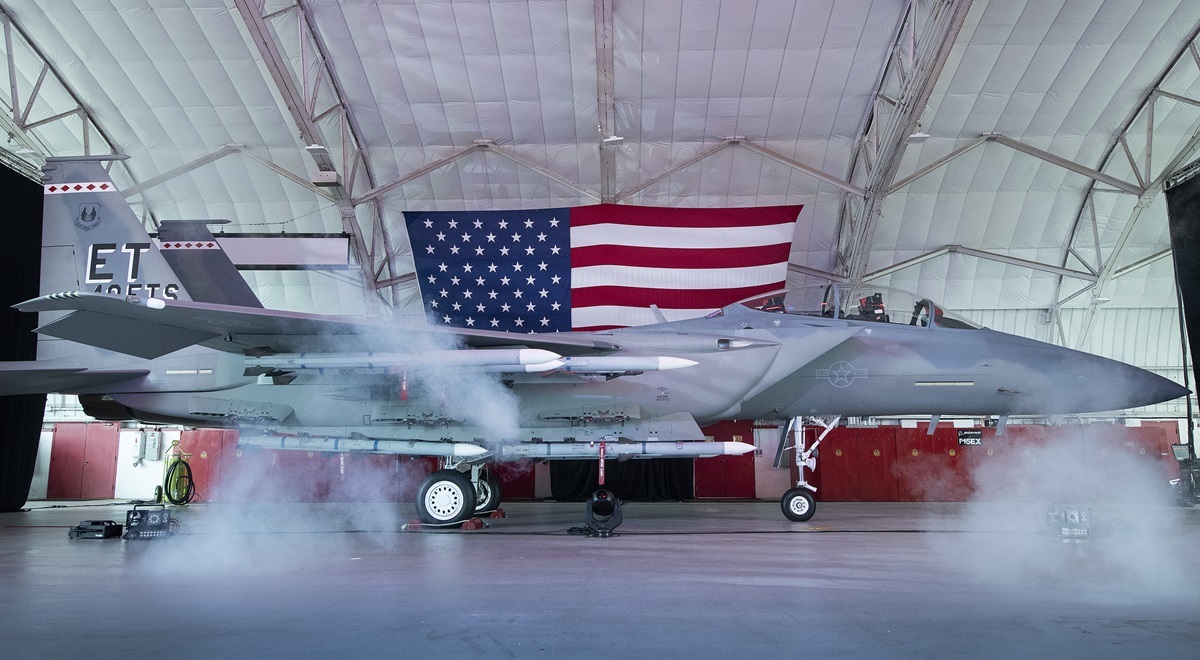Boeing wants to sell modernised F-15EX Eagle II fighters to Saudi Arabia - the aircraft will face competition from the Dassault Rafale and Eurofighter Typhoon
Saudi Arabia is considering three aircraft to reinforce the Royal Air Force

Boeing sees Saudi Arabia as a potential buyer of modernised F-15EX Eagle II fighters. The US giant is ready to ramp up production if demand from abroad grows.
Saudi Arabia is a long-time Eagle operator. The kingdom from the Arabian Peninsula has consistently purchased Boeing aircraft in various modifications over the years. The F-15EX is ideal for adding critical capabilities as the country seeks to accelerate the modernisation of its fighter fleet.
The US previously sold 84 F-15SA aircraft to Saudi Arabia. This was the most advanced configuration until the F-15QA was introduced for the Royal Qatar Air Force. It is on the basis of this model that the F-15EX Eagle II is built.
- crew: pilot and weapons systems operator;
- length: 19.45 metres;
- wingspan: 13 m;
- height: 5.65 metres;
- maximum take-off weight: 15,694kg;
- engines: General Electric F110-GE-129 x2;
- maximum speed: 2655 km/h;
- combat range: 1272 km;
- ferry range: 3900 km (with external fuel tanks);
- practical ceiling: 18 km.
The first two F-15EXs were developed in a test modification. Late last year, the fighter in its final configuration took to the skies for the first time. The cost of the aircraft in the first batches will be more than $90 million. Thus, they will be more expensive than the F-35A Lightning II for the US Air Force.
America has already tested the modernised fighter jet with the new missiles. Last year it was able to launch three JASSM missiles and lifted 12 AMRAAM missiles. In the future, the Eagle II will become a hypersonic weapons carrier.

The secret of the F-15EX Eagle II is the use of AMBER (Advanced Missile and Bomb Ejector Rack) missile racks. Their use increases the number of combat modules from 17 to 23. For comparison, a conventional F-15 Eagle with identical dimensions can carry up to eight air-to-air missiles. This is usually a combination of Sidewinder, AMRAAM and Sparrow.
Saudi Arabia now has 68 F-15S fighters in its arsenal, upgraded to the F-15SR standard. These are largely equivalent to the US Air Force's version of the F-15E Strike Eagle.
In addition, the Royal Saudi Air Force fleet includes 62 older F-15C/D fighters. These were procured during the 1980s. The aircraft have not undergone deep modernisation and are now used mainly for airspace protection.
Boeing will face competition from two European companies. For the first time in recent history, Saudi Arabia is considering several options simultaneously to strengthen its air force.

Specifically, it is talking about the European aircraft Dassault Rafale and Eurofighter Typhoon. The French company is an outsider in the race, but it has officially confirmed that negotiations are still underway. The potential order includes 54 fighter jets.
As for the Typhoon, Saudi Arabia already has experience with the European-end aircraft. The kingdom received 72 fighters and was planning to place a second order to replace the Panavia Tornado IDS strike aircraft. However, Germany blocked the deal in 2018 over concerns about human rights abuses in Saudi Arabia and the country's role in the Yemen war.

Last year, UK Prime Minister Rishi Sunak discussed lifting the embargo with Chancellor Olaf Scholz. However, there has been no breakthrough so far.